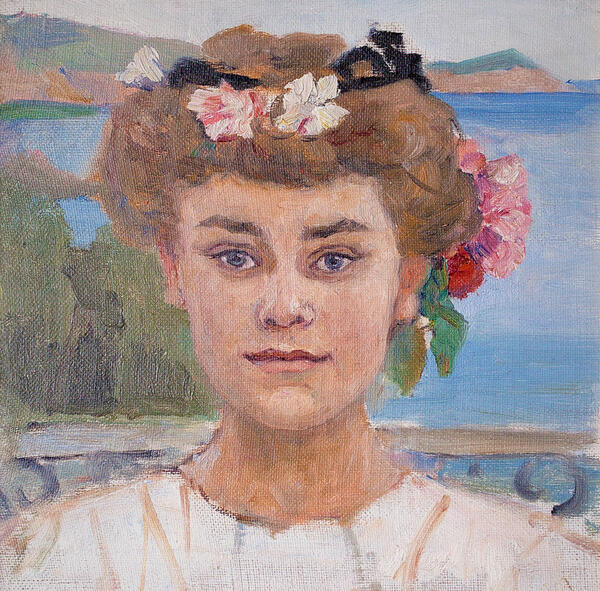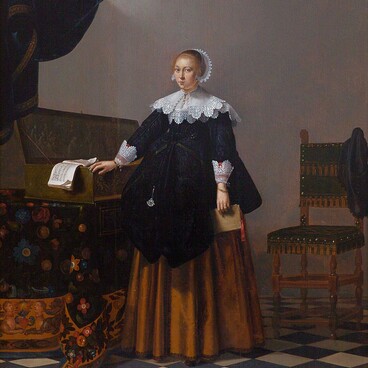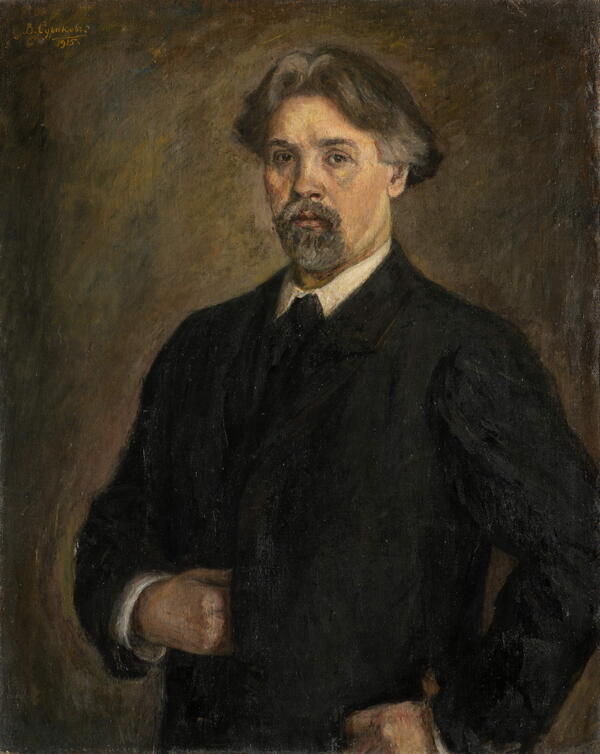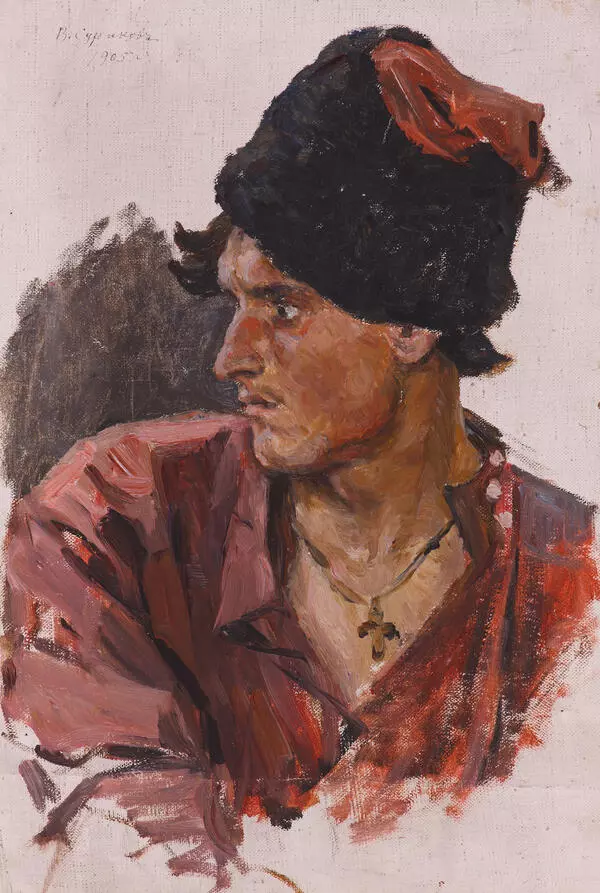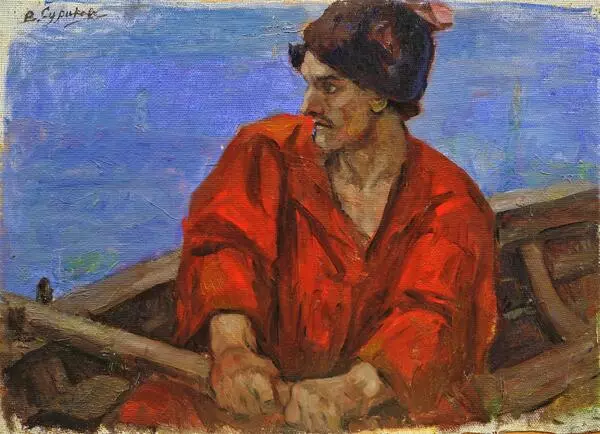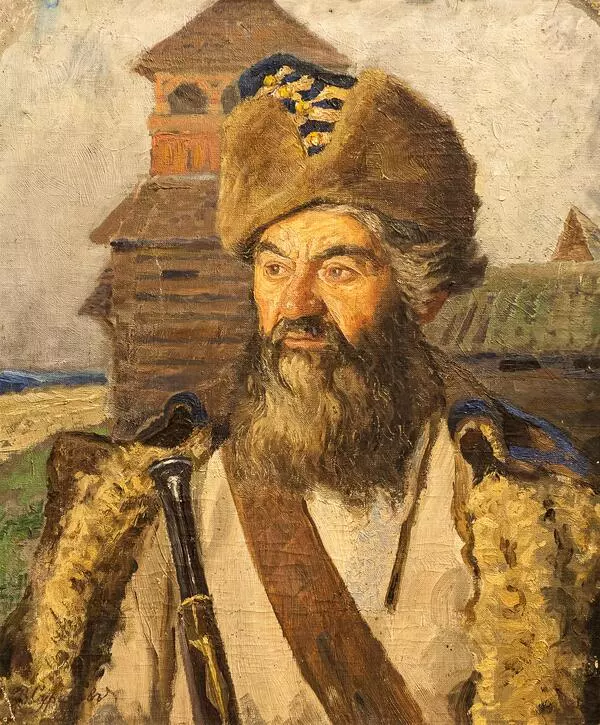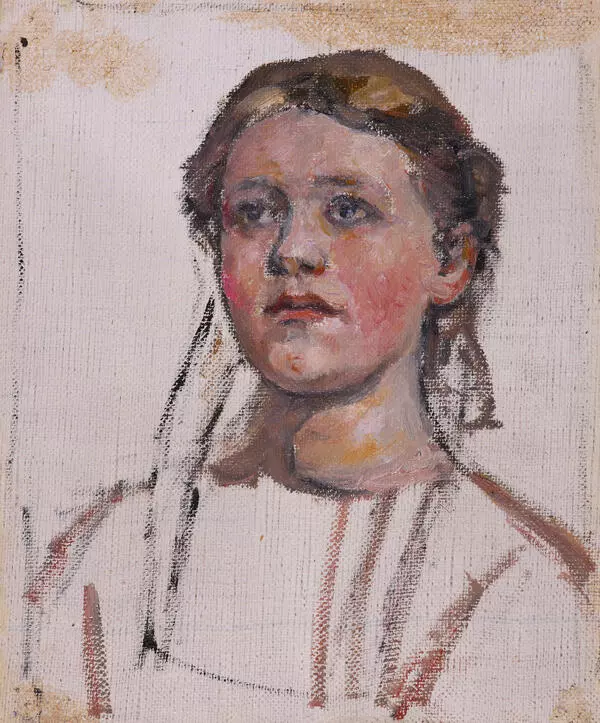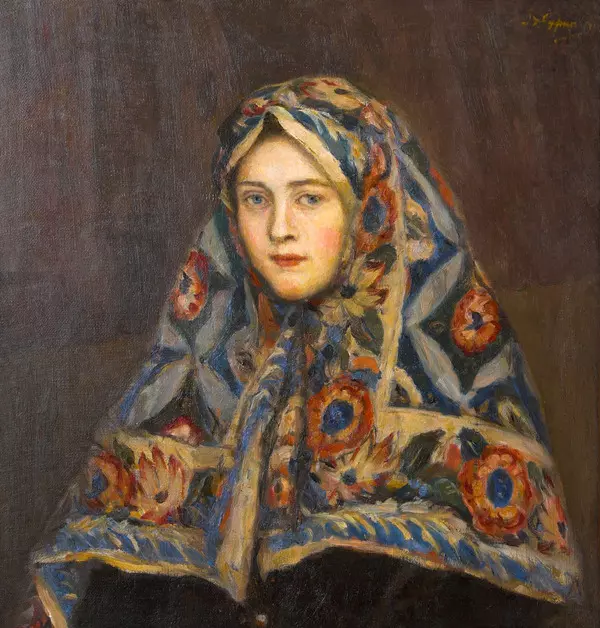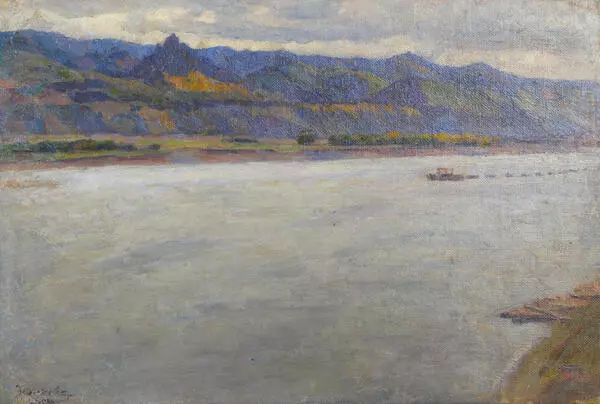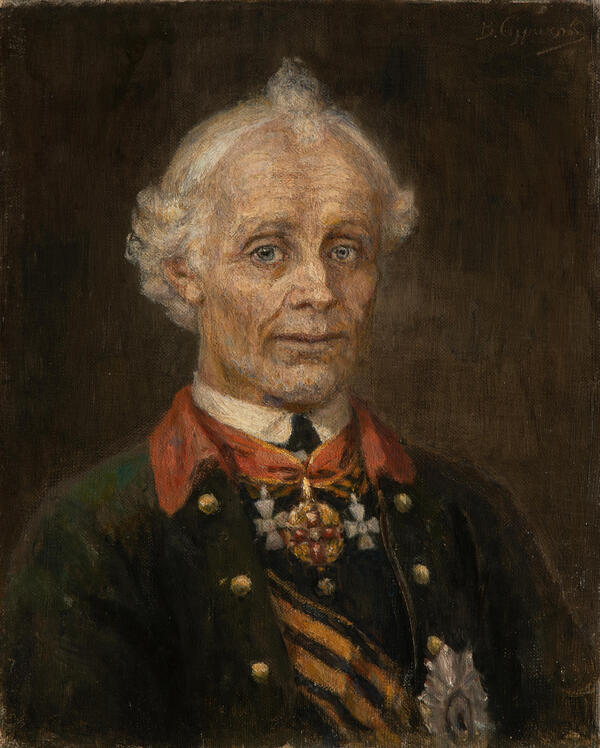Zinaida Khaminova was born into a wealthy merchant family in Irkutsk. When her father died, her mother Anna Khaminova moved with the children to Moscow. The family settled in the city’s center. In her memoirs, Evgenia Dorogostayskaya, Anna Khaminova’s great-niece, writes that Zinaida was ‘a strong, intelligent, enterprising and well-cultured woman’. At the beginning of the 20th century, Siberian artist Vasily Surikov was a ‘regular guest at Khaminova’s house’.
The artist met the Khaminov family in 1908 in Crimea while on vacation and painted a portrait of Zinaida Khaminova. At that time, she attended pedagogical courses of the Moscow Society of Educators and Teachers. However, her mother wanted her children to opt for a creative career. Dorogostayskaya wrote:
The artist met the Khaminov family in 1908 in Crimea while on vacation and painted a portrait of Zinaida Khaminova. At that time, she attended pedagogical courses of the Moscow Society of Educators and Teachers. However, her mother wanted her children to opt for a creative career. Dorogostayskaya wrote:

